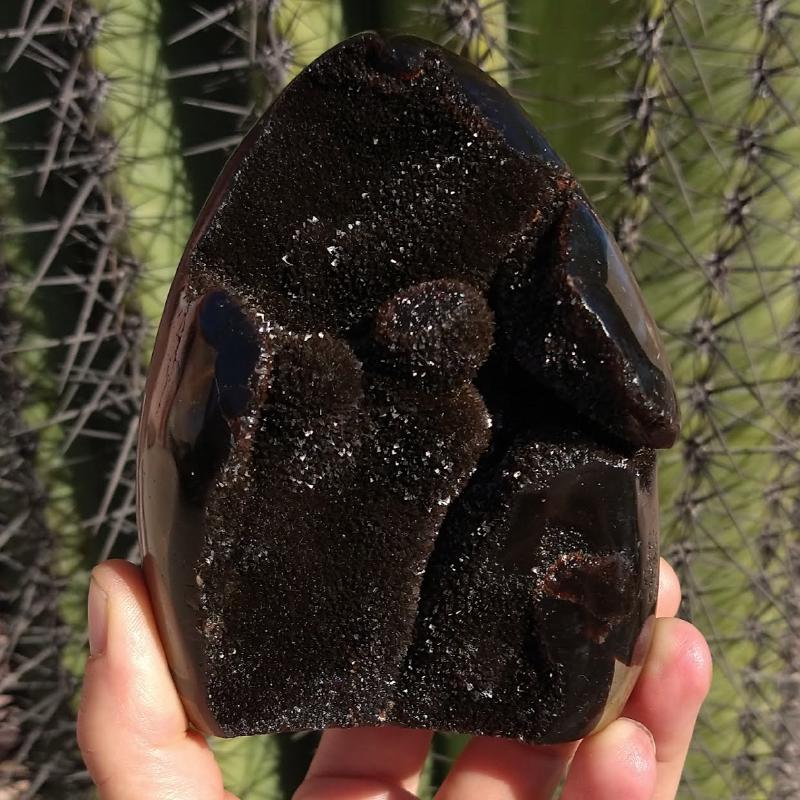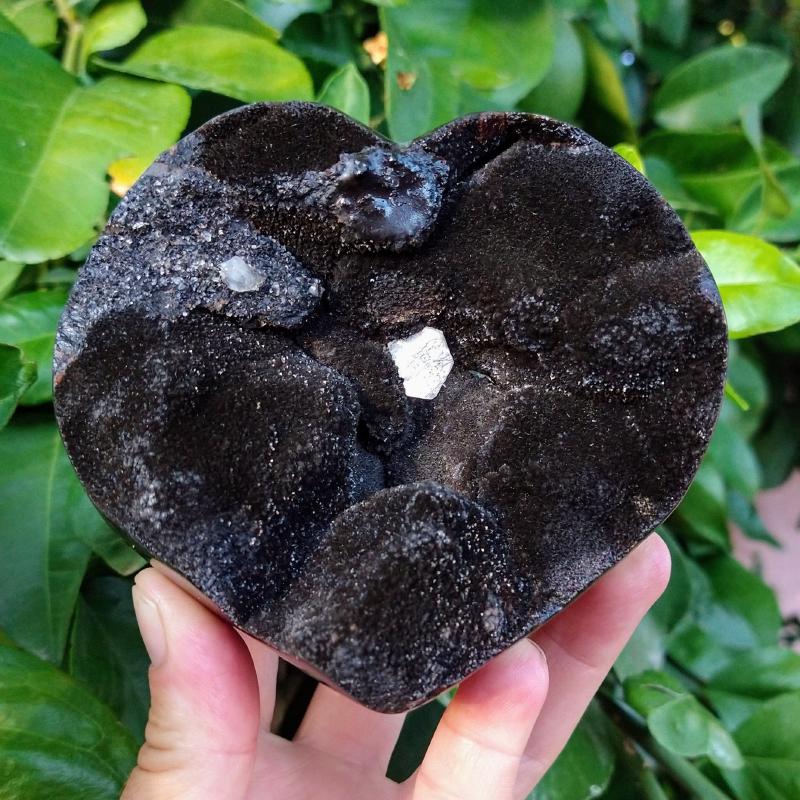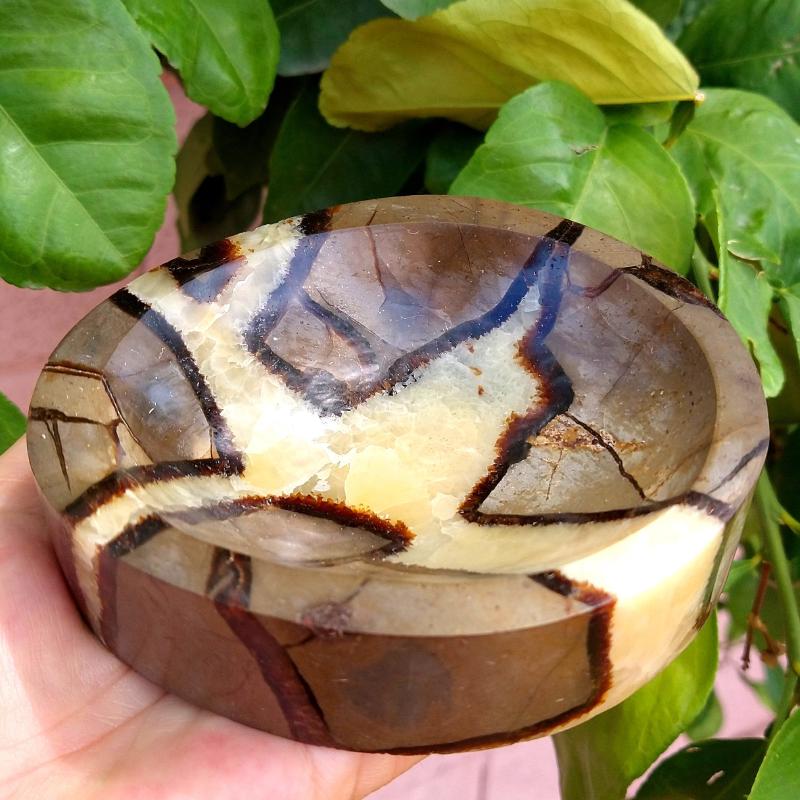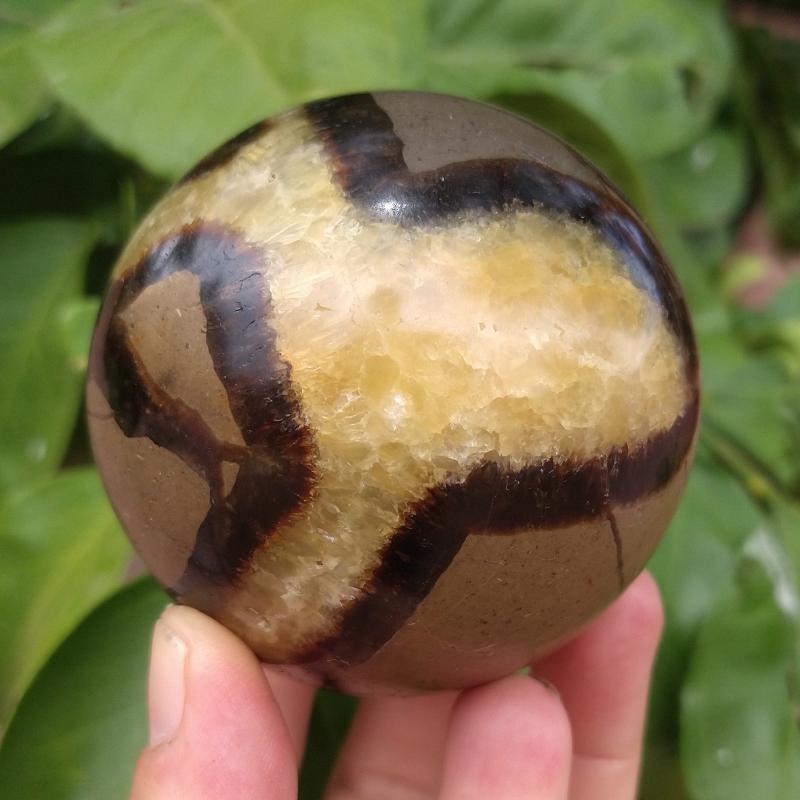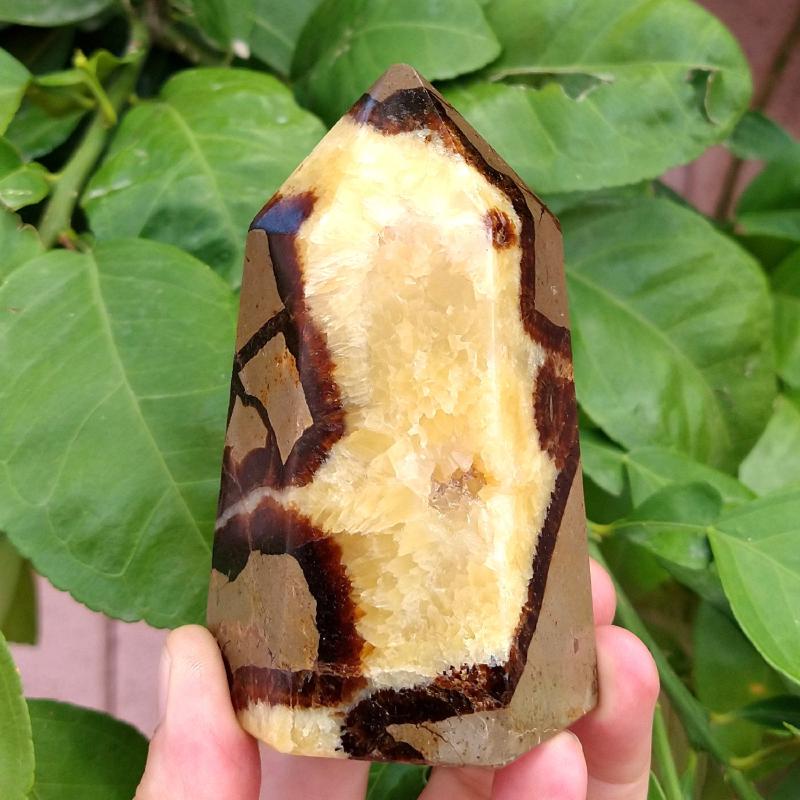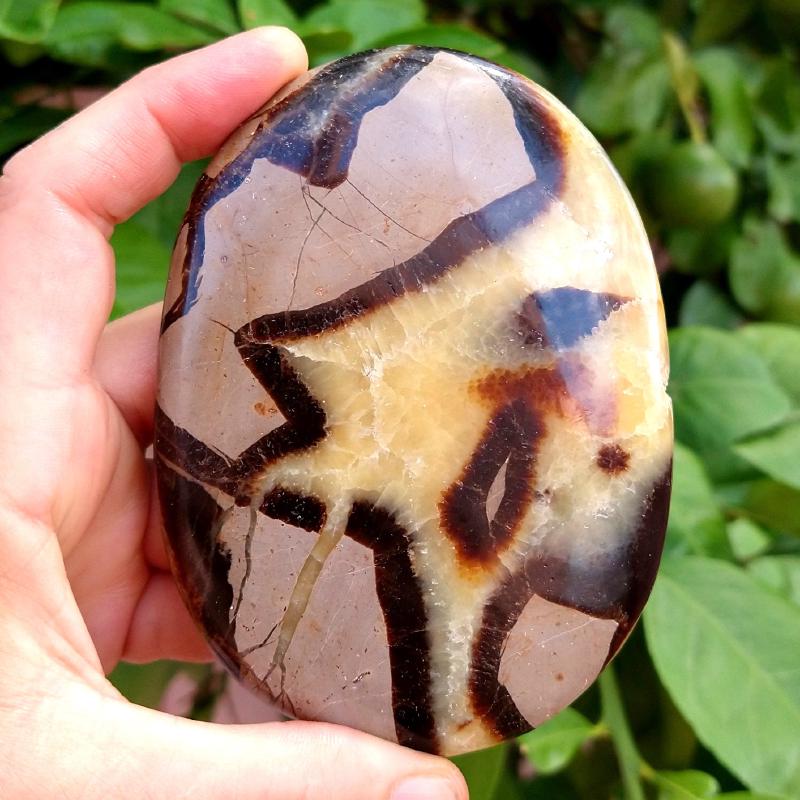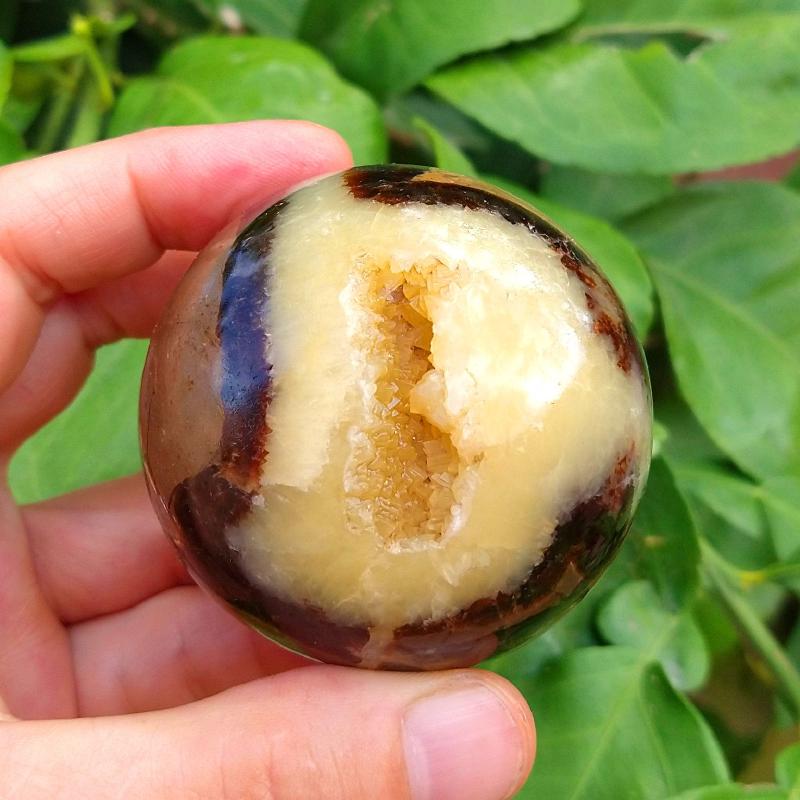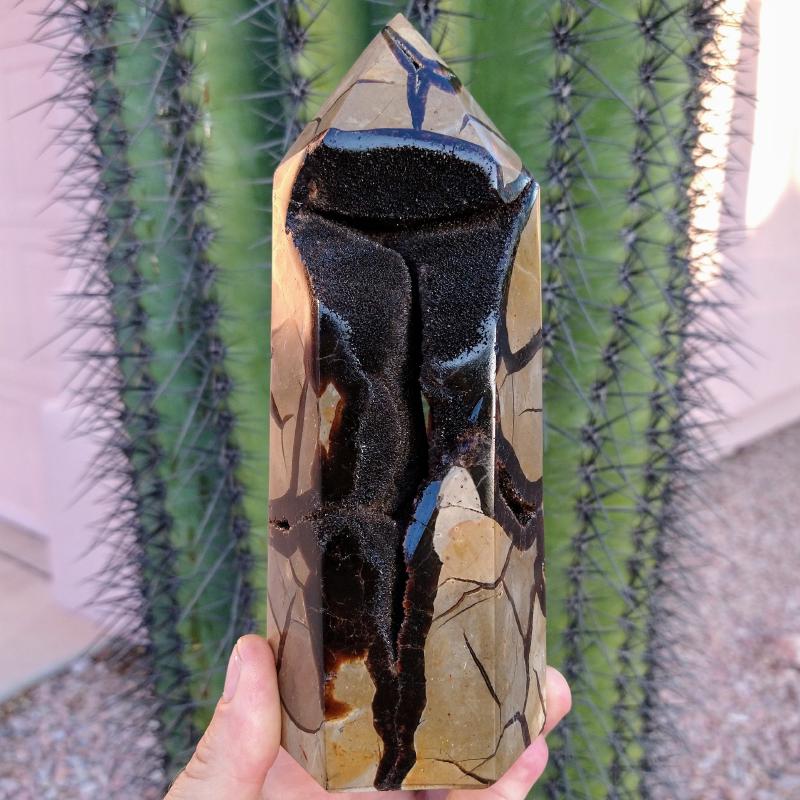Septarians formed between 50 to 70 million years ago. As a result of volcanic eruptions, dead sea life was chemically attracted to the sediment around them, forming mud balls. As the ocean receded, the balls dried and cracked. Due to their bentonite content they also shrank in size, creating the cracks inside. As decomposed shells seeped down into the cracks in the mud balls, calcite crystals formed. The outer thin walls of calcite then transformed into aragonite. The name Septarian comes from the Latin word “septem”, meaning seven, because the mud balls had a tendency to crack in 7 points in every direction, thereby creating the distinctive pattern these nodules exhibit.
Septarians are composed of Calcite (The Yellow Centers), Aragonite (The Brown Lines), and the outer grey rock is Limestone.


